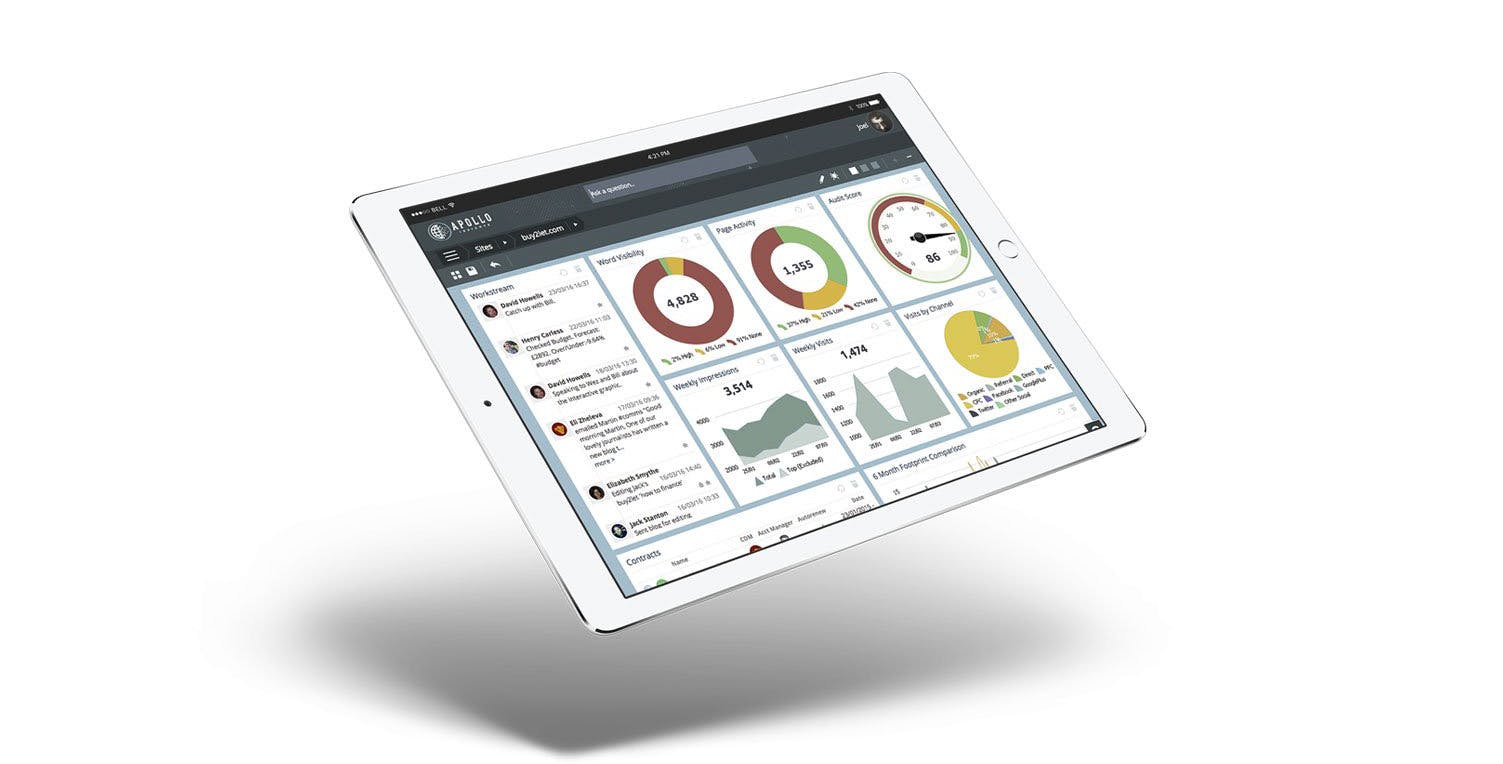Intelligent automation uses artificial intelligence to gain insights from big data and turn them into action. By implementing machine learning models into automated systems, programmes can crunch data, make decisions and then take action without the input of human beings.
Self-driving cars use intelligent automation to analyse sensory data, allowing them to stay on the road and avoid obstacles.
Now, if you switch that sensory input for marketing insights and customer data, intelligent automation is capable of making marketing decisions more efficiently than a human marketer.
Here are three use cases for intelligent automation in marketing…
1. Flag up marketing opportunities in real-time
One of the biggest challenges marketers face is unearthing new opportunities as the competition increases and space for visibility gets smaller. With Google’s SERPs shrinking, organic social reach fading and new competitors emerging every year, how do you find new opportunities before they’re already gobbled up?
The answer lies in big data but extracting insights from large datasets takes time. Unless, of course, you have AI models crunching the numbers for you and predicting trends before they even happen.
Having the intelligence to unearth new opportunities is one thing, but capitalising on them before anyone else is the real challenge. If your content marketing team has to crawl through reports for the past week to find these insights, you’re already missing out.
Intelligent automation can remove the time lag by notifying marketing managers of new opportunities as soon as they emerge, much like our software at Vertical Leap, Apollo Insights, does for us. Depending on how much data you’re working with, your predictive algorithms can even order opportunities by their potential, difficulty, cost and whichever criteria you decide is most important.
No more missed opportunities or wasting resources on low-value campaigns.

2. Behavioural personalisation
With data privacy and legislation like GDPR making it more difficult to capture personal data, brands are struggling to deliver relevant experiences. Luckily, intelligent automation allows us to take a different approach to personalising experiences without relying so heavily on personal data.
Behavioural personalisation adapts experiences and messages based on the actions users take during sessions. By analysing this data and comparing it with previous sessions, artificial intelligence can predict which messages the current user will respond to and automatically deliver them – completely anonymously.
Essentially, you’re using predictive analytics to automatically deliver personalised experiences.
The drawback of behavioural personalisation is that you can’t attribute actions to individuals across multiple sessions until you’ve got their consent to use cookies and tracking IDs. However, you can overcome this, to a large extent, by using third-party consumer data to train your machine learning models to make more advanced and accurate predictions.
The time will come when it makes sense to ask for consent and capture personal data from users. In the meantime, intelligent automation allows you to deliver personalised experiences from the first interaction without relying completely on personal data.
As Adobe says about its own AI experience platform, it’s time for personalisation to grow up.
3. Automating customer retention
Predictive analytics doesn’t only allow you to deliver personalised experiences. In fact, your system’s ability to make advanced, accurate predictions only increases as leads turn into customers and you compile more data. Which means intelligent automation makes some of its most valuable decisions at the customer retention stage of the sales cycle.
Now your AI systems are looking for behavioural patterns that reveal when existing customers are ready to make their next purchase and what they’re interested in buying. You don’t need to sit back and wait for consumer intent to intensify either. Amazon uses AI recommendation engines to predict which items customers might also be tempted by and shows these products on future sessions.
The ecommerce giant also sends automated emails to users featuring personalised recommendations – a strategy that was once credited with generating 35% of the company’s revenue.
The same principle can be used to identify behaviour that results in customer churn and automate prevention strategies. For example, a software company can analyse data from user sessions to identify signals that users are experiencing problems with the platform. Once user issues are detected, in-app notifications can automatically trigger, offering helpful tips to solve issues and prevent users from abandoning the software.

Likewise, if session data shows customers are simply using the software less often or making fewer purchases than previously, re-engagement campaigns can be triggered automatically to bring them back on board.
At Vertical Leap, we use intelligent automation to unearth opportunities for our customers before their competitors do. If you’d like to find out how we can help you, contact us on 02392 830281 orinfo@vertical-leap.uk.




